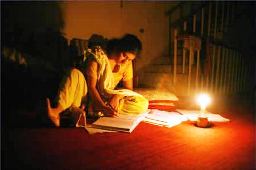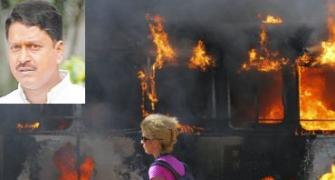 Six decades after Independence, India's villages are groping in the dark literally.
Six decades after Independence, India's villages are groping in the dark literally.
The second Human Development Report 2011, to be released after a gap of 10 years, paints a dismal picture of the access that rural households have to electricity.
The overall coverage of electricity in rural households across the country continues to be low, with around one-third of total households having no access to electricity for domestic use, as per the report prepared by the Institute for Applied Manpower Research under the Planning Commission.
The report is based on the National Sample Survey data of 2008-09. The earlier report was released in 2001.
The situation is particularly bad in the country's ‘cow belt'.
Sample the case of Bihar.
As of 2008-09, that state has just about 25 per cent of rural households which have access to electricity for domestic use. In Jharkhand, it is 43.
In Orissa and Uttar Pradesh, it is 45 per cent and 38 per cent, respectively.
This, when China, way back in 1991 itself, had 94 per cent of rural households having electricity connection.
In totality, percentage of Indian households (both rural and urban) with electricity for domestic use showed a quantum jump from 64 per cent in 2002 to 75 per cent in 2008-09.
The electricity coverage during this period was best in Himachal Pradesh, with 98
The worst in Bihar: 31 per cent.
The report analyses the country's human development indicators on three main parameters namely education, health and living standard.
The theme for this year's report is "Towards Social Inclusion."
Living standards include housing, electricity and telephony.
Officials said the rise in overall households with electricity had risen due to government programmes like Rajiv Gandhi Grameen Vidhyutikaran Yojana.
"Poorer states," said a source, "have also seen a huge rise in percentage of domestic households with electricity, though this remains low in rural areas."
In terms of teledensity in rural areas, Punjab tops with 53 per cent while Chhattisgarh at 3 per cent is at the bottom.
Overall, teledensity rose from 22 per cent in 2001 to 66 per cent in 2010, largely fuelled by urban teledensity. In rural areas, teledensity rose by 20 percentage points, the report said.








